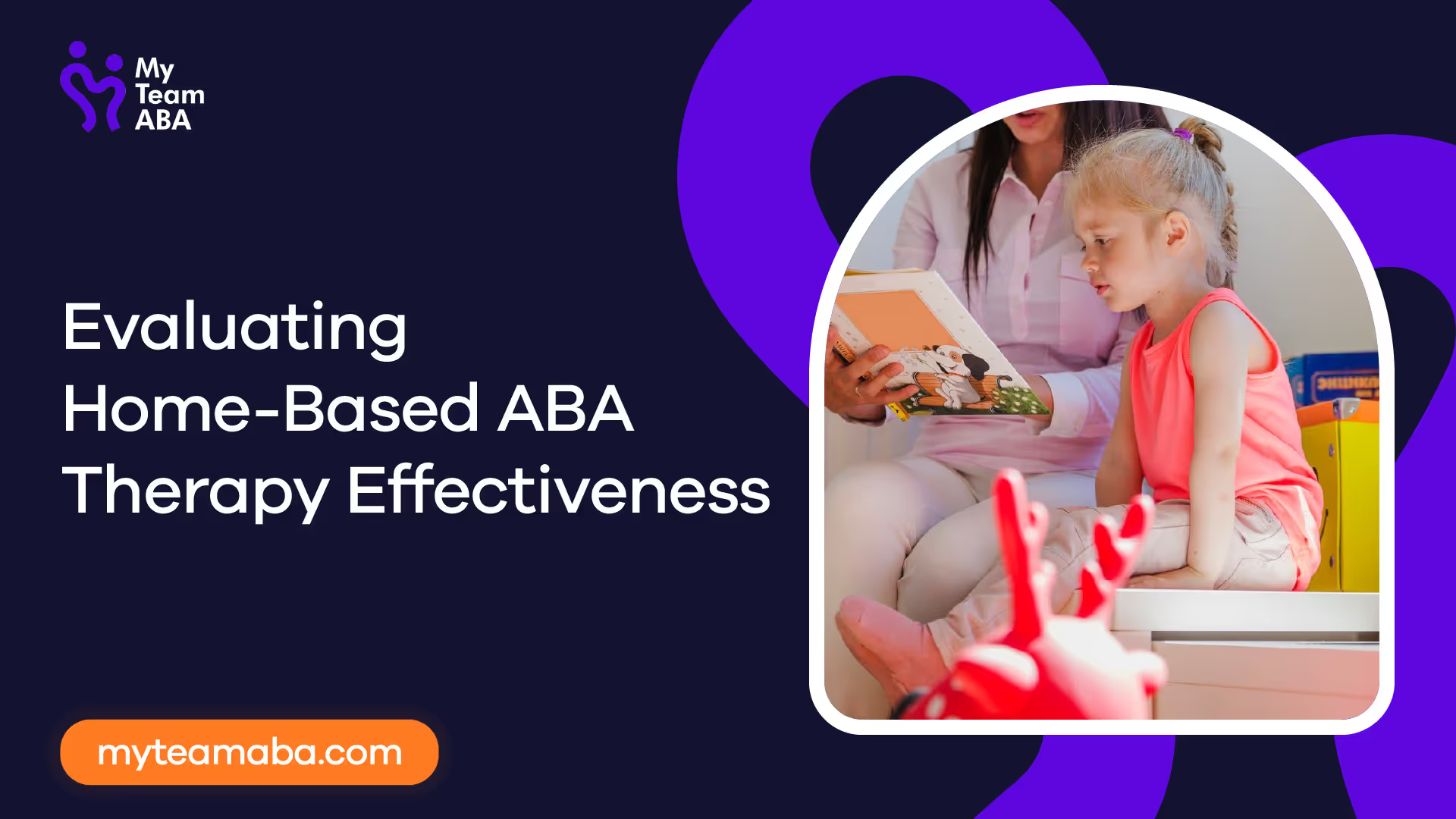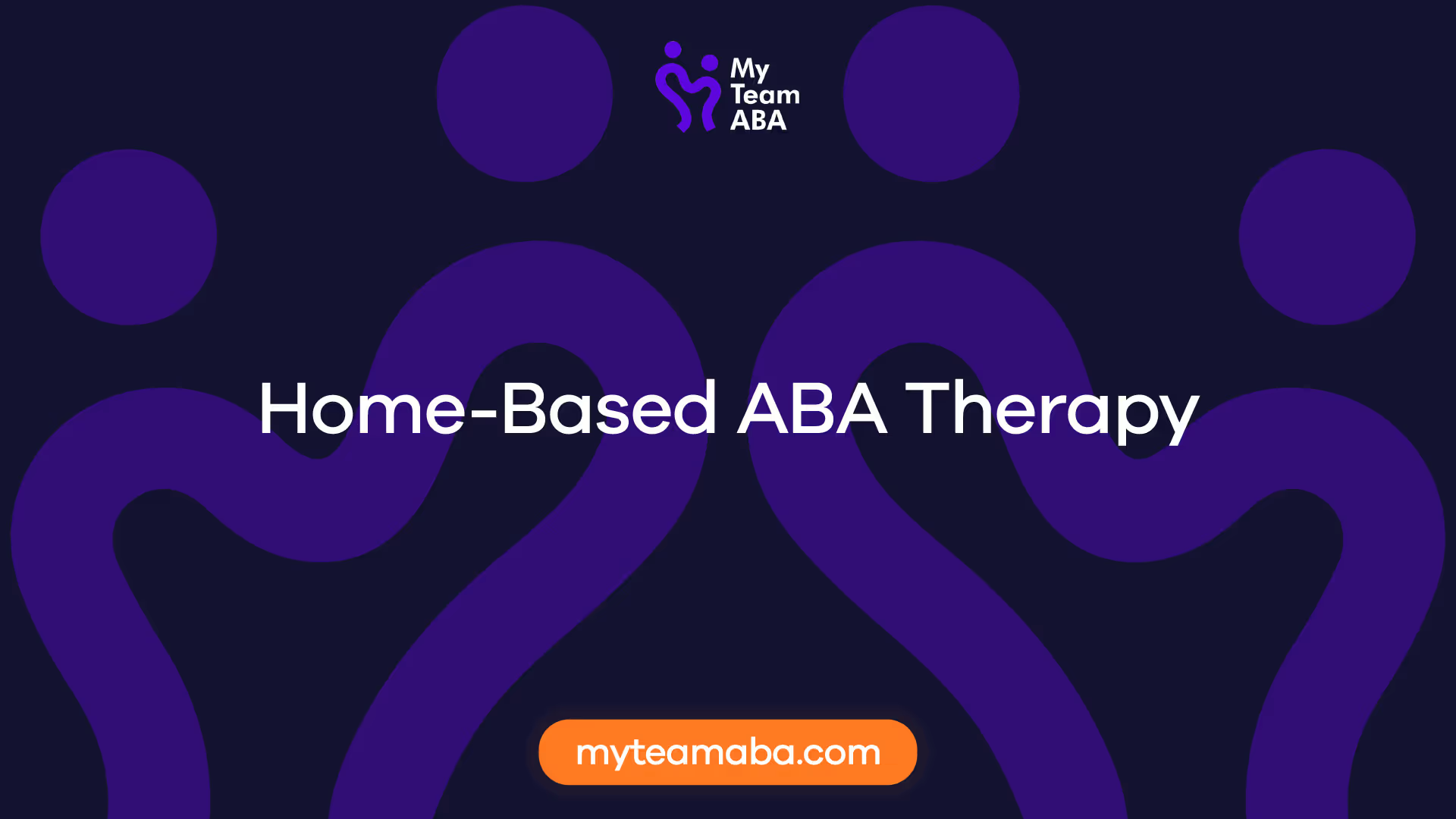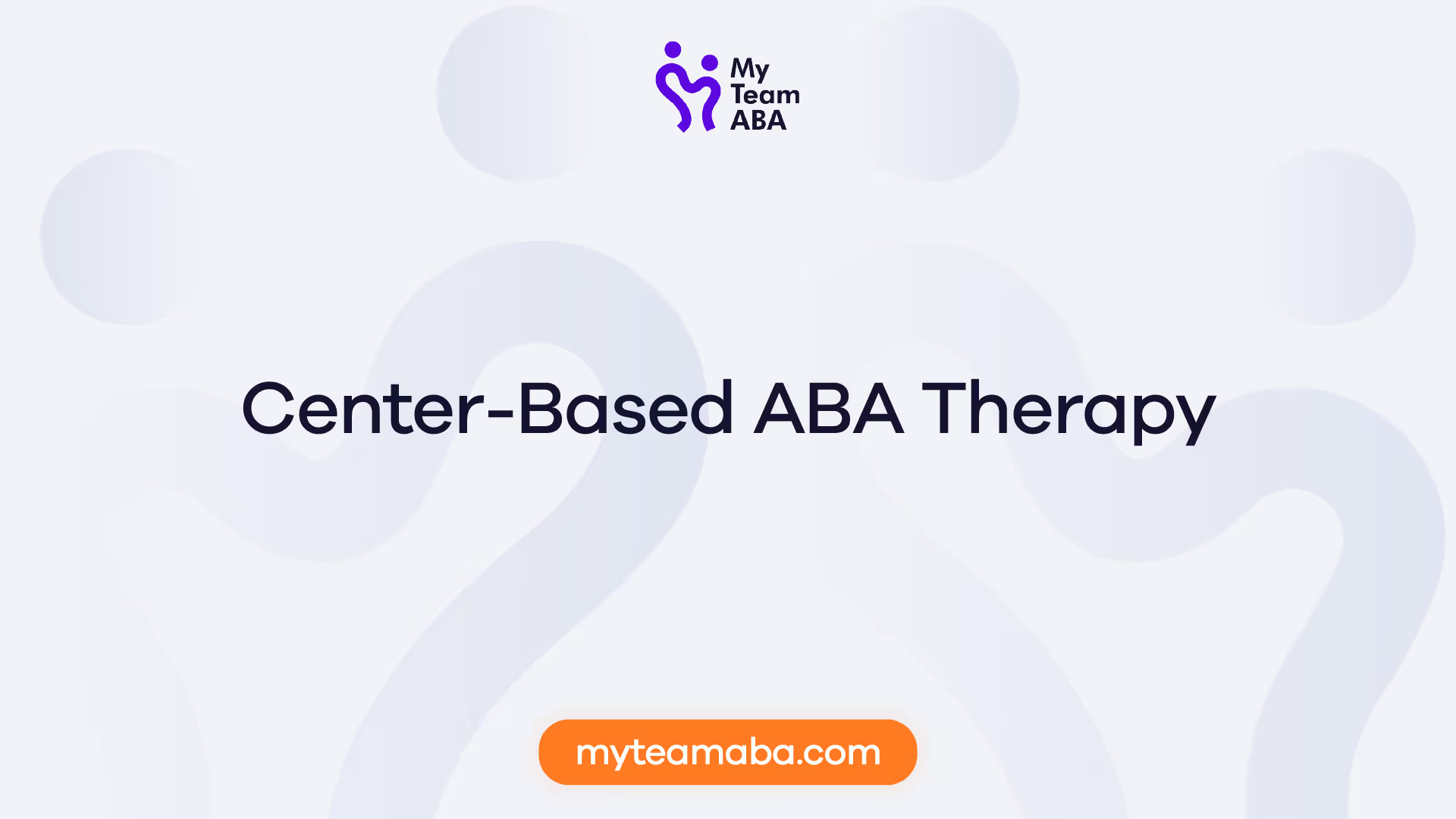Evaluating Home-Based ABA Therapy Effectiveness
March 3, 2025
Discover the impact of home-based ABA therapy! Unveil effectiveness and progress tracking tips for families.


Understanding ABA Therapy
Applied Behavior Analysis (ABA) therapy is a well-established and evidence-based intervention primarily utilized for individuals with autism spectrum disorder (ASD). ABA therapy focuses on comprehending and modifying behaviors to assist individuals in acquiring crucial skills and enhancing their overall quality of life.
Basics of ABA Therapy
At its core, ABA therapy aims to break down complex behaviors into smaller, manageable components. By using this approach, therapists can effectively teach new behaviors while reducing undesirable ones. Through systematic observation and analysis, ABA therapists identify the factors influencing a person's behavior and implement tailored interventions to promote positive changes.
ABA therapy relies on reinforcement principles to encourage desired behaviors. Positive reinforcement involves rewarding desired behaviors to increase their occurrence, while negative reinforcement involves removing aversive stimuli to reinforce positive behaviors. This structured and individualized approach enables individuals to develop essential skills and improve their social interactions, communication abilities, and daily living skills.
Importance of ABA Therapy
The significance of ABA therapy lies in its robust research foundation and proven efficacy in enhancing outcomes for individuals with autism spectrum disorder. By focusing on increasing adaptive behaviors and reducing challenging behaviors, ABA therapy aims to facilitate the development and functioning of individuals with ASD. Through consistent and targeted interventions, individuals can learn new skills, improve their independence, and enhance their overall quality of life.
Families and caregivers play a vital role in supporting individuals undergoing ABA therapy. Collaborating with therapists, setting effective goals, and creating a supportive environment are crucial elements in maximizing the benefits of ABA therapy. To explore further on engaging the whole family in the ABA therapy process, refer to our article on getting the whole family involved in ABA therapy.

Home-Based ABA Therapy
In the realm of ABA therapy, home-based interventions play a significant role in providing effective treatment for individuals. This section will explore the advantages of home-based therapy, the implementation process, as well as the challenges and considerations associated with this approach.
Advantages of Home-Based Therapy
Home-based ABA therapy offers a unique set of advantages that contribute to its effectiveness. Learning in a familiar environment allows for the generalization of skills to real-life situations, enhancing the individual's ability to apply learned behaviors outside of therapy sessions. This approach also provides flexibility in scheduling, accommodating the individual's routine and lifestyle, and offers the opportunity for greater family involvement in therapy.
Moreover, home-based ABA therapy involves a qualified ABA therapist working directly with the individual in their home setting. This direct interaction allows for a highly individualized and personalized treatment plan tailored to the specific needs and goals of the individual, fostering a conducive learning environment.
Implementation of Home-Based Therapy
Implementing home-based ABA therapy requires a collaborative effort between therapists, behavioral consultants, and other providers. Teamwork and clear communication are essential for the success of the therapy program. Establishing clear expectations, providing feedback, and addressing conflicts are crucial elements to ensure the effectiveness of the therapy sessions [2].
The personalized and flexible approach of home-based ABA therapy allows for the integration of therapy into the individual's natural environment. This promotes skill development and enhances overall well-being through collaboration, customization, and the utilization of familiar surroundings.
Challenges and Considerations
While home-based ABA therapy offers numerous benefits, it also presents challenges that need to be addressed for the therapy to be effective. One of the key challenges is ensuring consistency and adherence to the therapy plan outside of scheduled sessions. Maintaining continuity in implementing strategies and interventions is crucial for long-term progress and success.
Additionally, the home environment may present distractions or obstacles that could impact the effectiveness of therapy sessions. It is essential to create a structured and conducive environment for therapy to take place, minimizing disruptions and optimizing the learning experience.
To overcome these challenges, effective goal setting in ABA therapy is essential. Setting clear and measurable goals, along with regular progress tracking, can help keep the therapy on track and ensure that the individual is making meaningful strides towards their objectives.
Financial considerations are also significant when considering home-based ABA therapy. Families may seek financial aid for home-based ABA therapy to alleviate the costs associated with ongoing treatment. Exploring available resources and support options can help make home-based therapy more accessible to those in need.

Center-Based ABA Therapy
Exploring the realm of ABA therapy, center-based therapy stands out as a structured and beneficial approach for individuals seeking treatment. This section delves into the advantages of center-based therapy, the approach within these settings, and how it compares to home-based therapy.
Benefits of Center-Based Therapy
Center-based ABA therapy, as highlighted by research conducted by Smith and Johnson (2018) (Yellow Bus ABA), offers a structured setting with access to a team of professionals and peers for social interaction and learning. This structured environment facilitates learning and skill development by providing resources, equipment, and opportunities designed to support ABA therapy goals.
Moreover, individuals undergoing center-based therapy have access to professionals specializing in ABA techniques, offering a wide array of resources, tools, and materials that enhance the therapy experience. Collaboration and peer interaction among therapy recipients foster social skills development, creating a holistic approach to therapy.
Approach in Center-Based Settings
In center-based ABA therapy, the approach is centered around a controlled and structured environment that optimizes learning and skill development for individuals with autism. Resources and equipment tailored to support ABA therapy goals are readily available, promoting a focused and effective therapy experience. The collaborative nature of center-based therapy allows for a team of professionals to work together, ensuring comprehensive care that addresses the unique needs of each individual.
Comparison with Home-Based Therapy
A study published by the National Institute of Health (NIH) (ABTA) revealed that children participating in a center-based ABA therapy model achieved 100% more learning per hour compared to home-based therapy. This finding underscores the efficacy and impact of center-based therapy in providing intensive and focused interventions for individuals with autism spectrum disorder (ASD).
Long-term studies, such as the one discussed by NCBI, have shown that comprehensive ABA interventions, including center-based therapy, have positive effects on intellectual functioning, language development, daily living skills, and social functioning in individuals with ASD. This highlights the long-term benefits and effectiveness of center-based ABA therapy in promoting the lifelong development and well-being of individuals with autism.
By weighing the benefits, approach, and comparison of center-based ABA therapy with home-based therapy, individuals can make informed decisions regarding the most suitable treatment approach for themselves or their loved ones. The structured and collaborative nature of center-based therapy offers a supportive environment that fosters growth, learning, and skill development in individuals with autism, contributing to their overall progress and well-being.
Effectiveness of ABA Therapy
When evaluating the effectiveness of ABA therapy, it is essential to consider research studies, long-term outcomes, and individualized therapy plans. These aspects play a significant role in understanding the impact and success of ABA therapy for individuals with autism.
Research Studies on ABA Therapy
Numerous research studies have been conducted to assess the effectiveness of ABA therapy for individuals with autism. A meta-analysis by Smith et al. (2018) found that both home-based and center-based ABA therapy led to significant improvements in various areas, including communication skills, social interaction, and adaptive behavior. This indicates that ABA therapy is a valuable intervention that can positively impact the lives of individuals with autism.
Research by Johnson (2019) further supported the positive outcomes of ABA therapy, highlighting improvements in communication, behavior, and daily living skills for children. It was emphasized that individualizing therapy to cater to each child's specific needs is crucial for maximizing the benefits of ABA therapy.
Long-Term Outcomes
Longitudinal studies, such as the analysis conducted by Williams (2020), have compared the long-term outcomes of home-based and center-based ABA therapy for children with autism. The findings revealed that both approaches were effective in maintaining gains over time. Continuous support and monitoring were identified as key factors in ensuring sustained progress and development for individuals undergoing ABA therapy.
Individualized Therapy Plans
One of the strengths of ABA therapy lies in its ability to provide individualized therapy plans tailored to the unique needs of each individual with autism. By customizing therapy sessions to address specific challenges and goals, therapists can maximize the effectiveness of ABA interventions. This personalized approach ensures that the therapy aligns with the individual's strengths and areas requiring improvement, leading to more targeted outcomes and progress.
Through a combination of evidence-based research, long-term outcome assessments, and personalized therapy plans, ABA therapy continues to demonstrate its effectiveness in supporting individuals with autism. By utilizing the insights gained from research studies and focusing on individualized therapy strategies, therapists can optimize the impact of ABA therapy and enhance the quality of life for individuals with autism.
Progress Tracking in ABA Therapy
Monitoring and tracking progress in ABA therapy is pivotal for assessing the effectiveness of interventions and tailoring treatment plans to meet the individual needs of those on the autism spectrum. Utilizing technology and ABA assessments are instrumental in this process, aiding therapists in delivering targeted interventions and enhancing outcomes for individuals with autism [4].
Importance of Progress Tracking
Progress tracking in autism therapy, particularly ABA therapy, serves as a cornerstone for evaluating the impact of interventions, determining optimal therapy hours, identifying suitable treatment settings, and crafting comprehensive treatment strategies. By conducting thorough assessments, therapists can gain valuable insights into the specific requirements and goals of each individual, enabling the creation of personalized and effective treatment plans.
Tools for Tracking Progress
In ABA therapy, data collection and analysis are fundamental components of progress tracking. Data-driven methodologies are employed to monitor and measure advancements, assess treatment efficacy, and make informed decisions to customize therapy according to the unique needs of each child. Graphing data trends is a widely utilized technique in Applied Behavior Analysis (ABA) therapy, facilitating the visualization of progress and enabling therapists to make data-informed adjustments to interventions.
Data Analysis and Interpretation
Effective data analysis is essential for extracting meaningful insights from progress tracking in ABA therapy. By analyzing collected data, therapists can evaluate the efficacy of treatments, identify patterns or trends in behavior, and adapt intervention strategies accordingly. Through meticulous data interpretation, therapists can make informed decisions to optimize therapy outcomes and ensure that interventions are aligned with the evolving needs of individuals on the autism spectrum.
By implementing robust progress tracking mechanisms, ABA therapists can not only gauge the effectiveness of interventions but also refine treatment plans, set achievable goals, and provide targeted support to enhance the overall well-being and development of individuals with autism. Family involvement is also a crucial aspect of ABA therapy, as families offer invaluable perspectives that inform personalized interventions and contribute to the success of therapy programs. For more insights on involving families in therapy, explore our article on getting the whole family involved in ABA therapy.
Family Involvement in ABA Therapy
When it comes to ABA therapy, the active involvement of families plays a vital role in the success and effectiveness of the therapy. In this section, we will explore the essential aspects of family involvement in ABA therapy, including the role of families in therapy, collaboration with therapists, and creating a supportive environment for the therapy process.
Role of Families in Therapy
Families are integral partners in the ABA therapy journey, particularly in the context of home-based therapy. According to ABTA, family involvement ensures that the skills learned during therapy sessions are generalized to home and community settings. This generalization leads to more meaningful and lasting changes in behavior. The unique insights that families provide about their child's behaviors, preferences, and daily routines are invaluable for therapists and educators. This knowledge helps in creating personalized interventions and teaching strategies tailored to the specific needs of the child.
Collaboration with Therapists
Effective home-based ABA therapy thrives on teamwork and collaboration between therapists, behavioral consultants, and other providers. As mentioned by ASAT, establishing clear expectations, providing feedback, and addressing conflicts are essential elements for the success of the therapy program. Collaboration between the family and the therapy team is crucial for the success of home-based ABA therapy. By working together, families and therapists can ensure that therapy goals are met effectively and that interventions are consistently applied across different settings.
Supportive Environment
Creating a supportive environment for ABA therapy sessions is key to optimizing the learning and progress of the child. Acknowledging and involving siblings in the household during therapy sessions can foster cooperation and engagement, as highlighted by ASAT. In addition, maintaining a clean and organized therapy area, providing necessary materials, and ensuring the child is presentable for sessions are important aspects of managing a home-based ABA program. Having funds for community activities and reimbursing expenses for providers also contribute to a conducive therapy environment.
By actively participating in therapy sessions, providing insights into the child's behavior, and collaborating with therapists, families can significantly enhance the effectiveness of ABA therapy. Building a supportive and structured environment at home further reinforces the positive outcomes of therapy, ensuring that the child receives comprehensive support across different aspects of their development.
References
[2]:
[3]:
[4]:
